#175: The Genus Russula
Russula is my favorite mushroom genus. This may be surprising to mushroom hunters because Russula mushrooms are generally ignored when foraging. However, I like them because they are very easy to identify and are genetically distinct from most other gilled mushrooms. Fungi in the genus Russula produce umbrella-like gilled mushrooms with crumbly flesh that do not exude liquid when injured.1
Description
Russula mushrooms are generally medium-sized to large with a central stipe, attached gills, pale spore prints, and neither a universal veil nor partial veil. Of course, there is some variation to these features. All russulas have gills that are at least somewhat attached to the stipe, but this ranges from “nearly free” to “slightly decurrent.” Most mushrooms in this group deposit white to cream-colored spore prints. However, certain species have much darker spores and produce bright yellow, bright orange, or brownish prints. Some russulas do form a partial veil, but these are usually tropical species and do not occur in the United States. However, many russulas have an inrolled margin that touches the stipe during development. This serves the same purpose as a partial veil since it encloses the gills until the mushroom is about to release its spores.2,3
The definitive feature of the genus Russula is that the mushroom tissues are composed of rounded cells called “sphaerocysts.” Most mushrooms are formed from chains of cylindrical hyphae, which makes the flesh stringy and cohesive. Thanks to the sphaerocysts, russulas have frim but brittle flesh. A classic test for russuals is to kick or throw the mushroom. If the mushroom is a Russula, it will normally break into many tiny pieces. An exception to this is R. compacta, which is much firmer than most other russulas. A less destructive way to test the flesh (and a method that works on R. compacta) is to try to break the stipe in half. The stipe of a Russula will snap like a piece of chalk while most other mushrooms will split into stringy pieces.1 Sphaerocysts also cause the flesh to be rather crumbly. Break off a piece of the mushroom and roll it between your fingers. The flesh should easily break apart into small, crumb-like pieces. Mushrooms in the genus Lactarius (FFF#176) also have sphaerocysts, but Lactarius mushrooms exude liquid when injured.1
There are a few other features common to most russulas that are less useful for identification of the genus. Russulas tend to be short and stocky: the stipe is rarely longer than the width of the pileus. They also often have a thin pileus and as a result usually develop wrinkles above the gills around the cap margin. Their stipes are usually unremarkable: whitish or paler than the pileus, undecorated, and hollow in the center at maturity.2
I also find that russulas usually have a distinctly boring base. The stipe simply ends with a rounded base, like a half-worn pencil eraser. There is frequently a thin disk of dirt attached to the center of the base. Consider these features together and the base looks unusually average. Of course, you can often identify a Russula without having to pick it up, so examining the base isn’t very useful.
Fungi in the genus Russula are ectomycorrhizal. They primarily form mycorrhizae with trees in the oak and pine families and so can be found fruiting on the ground in a wide variety of habitats. Russulas have an uncanny ability to pop up even when the weather is dry.1 In my area, they are most abundant during summer and fall. During peak months, you are unlikely to attend a foray without finding at least one Russula.
Edibility
Russula is a forgettable genus as far as edibility is concerned. The genus contains both edible and poisonous species.3 In my area, the most popular edible Russula species are those in the R. virescens/ R. crustosa cluster (FFF#133). That being said, hardly anyone bothers to eat them. They are not flavorful, not very abundant, and most people dislike the crumbly texture of russulas. Most poisonous russulas have gastrointestinal irritants that will give you symptoms of food poisoning but will not kill you.3
However, the majority of russulas are inedible. Lots of russulas, such as R. emetica, are acrid (spicy-hot). Some of these are mild, but many of them are too spicy to consider eating. On top of that, lots of mushrooms produce unpleasant odors. I doubt that many people would want to eat a mushroom that smells like vomit before you eat it.1,2
Identifying Russulas to Species
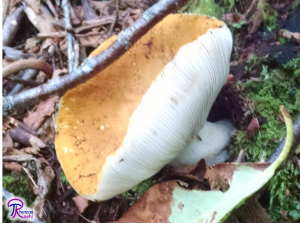
I might have been able to identify his yellow Russula species if I had more time. Most russulas take a lot of time and effort to identify to species.
This is where the genus Russula loses its charm. Bottom line: don’t expect to be able to identify your Russula down to species. There are a few species (or morphological species groups) that key out easily in field guides. Unfortunately, there are hundreds of other species with variable and overlapping features that will not key out.4 If you can’t find your Russula in a field guide, don’t bother identifying it. You probably don’t have the resources, time, or attention span required to complete that task. I know I don’t. Your best bet is to sequence a DNA sample and see where that gets you.
If you insist on attempting to ID an unusual Russula, you need to pay close attention to everything. Successful identification of Russula species relies on subtle variations in color, how far back the top layer of the pileus peels, taste, all the other normal macroscopic features, spore size, spore decorations, microscopic structure, etc. Basically, you need to make a note of every observable feature.4
Most people give up on trying to identify russulas soon after they start mushroom hunting. Russulas often appear in the summer with eye-catching colors and in large numbers, which would normally help key out the mushrooms. The first few red-capped russulas you find are interesting, but they just get boring once you realize you can’t identify them any further than “red Russula.” Red-capped russulas are notorious for resisting amateur mycologists’ best efforts at identification. Mushroom clubs have even developed the acronyms JARR (“Just Another Red Russula”) and JADRR (“Just Another Damn Red Russula”) so they can quickly dismiss requests to identify these infuriatingly difficult mushrooms.
Taxonomy
Russula belongs to the order Russulales and family Russulaceae. This places it in a different lineage from most other agarics, which primarily belong to the order Agaricales. Russulales includes the gilled genera Russula, Lactarius, and Lentinellus as well as some polypores, some toothed fungi, and some crust fungi.1,5 This indicates that Russula evolved gills independently of the core agarics, making it a wonderful example of convergent evolution.
Russulaceae includes only Russula, Lactarius, and their very close relatives.1,5 In recent years, mycologists have split up the genus Lactarius to more accurately reflect phylogenetic relationships.6 I would not be surprised if the same thing happened to Russula sometime in the near future.
| Kingdom | Fungi |
| Phylum | Basidiomycota |
| Subphylum | Agaricomycotina |
| Class | Agaricomycetes |
| Order | Russulales |
| Family | Russulaceae |
| Genus | Russula Pers.7 |
This post describes a group of mushrooms and as such the information on this page (including the pictures) cannot be used to identify any mushroom in particular.
This post does not contain enough information to positively identify any mushroom. When collecting for the table, always use a local field guide to identify your mushrooms down to species. If you need a quality, free field guide to North American mushrooms, I recommend Michael Kuo’s MushroomExpert.com. Remember: when in doubt, throw it out!
See Further:
http://www.mushroomexpert.com/russula.html
http://botit.botany.wisc.edu/toms_fungi/sep2004.html
Citations
- Thomas J. Volk. Tom Volk’s Fungus of the Month for September 2004. Tom Volk’s Fungi (2004). Available at: http://botit.botany.wisc.edu/toms_fungi/sep2004.html. (Accessed: 27th January 2017)
- Benjamin Woo. Trial field key to the species of RUSSULA in the Pacific Northwest. Pacific Northwest Key Council (1989). Available at: http://www.svims.ca/council/Russul.htm. (Accessed: 27th January 2017)
- Miller, O. K. & Miller, H. North American mushrooms: a field guide to edible and inedible fungi. (Falcon Guide, 2006).
- Michael Kuo. The Genus Russula. MushroomExpert.Com (2009). Available at: http://www.mushroomexpert.com/russula.html. (Accessed: 27th January 2017)
- Michael Kuo. Mushroom Taxonomy: The Big Picture. MushroomExpert.Com (2014). Available at: http://www.mushroomexpert.com/taxonomy.html. (Accessed: 27th January 2017)
- Lactifluus. Wikipedia (2016).
- Russula. Mycobank Available at: http://www.mycobank.org/BioloMICS.aspx?Table=Mycobank&Rec=57329&Fields=All. (Accessed: 27th January 2017)
Unfortunately, I had to cite a Wikipedia article in this post. This happened for two reasons. First, the website for the journal Mycologia was down and I could not double-check the phylogenies against one of its articles. Second, Wikipedia is updated more frequently than most other online resources. The other sources I used are not recent enough to mention Lactifluus.

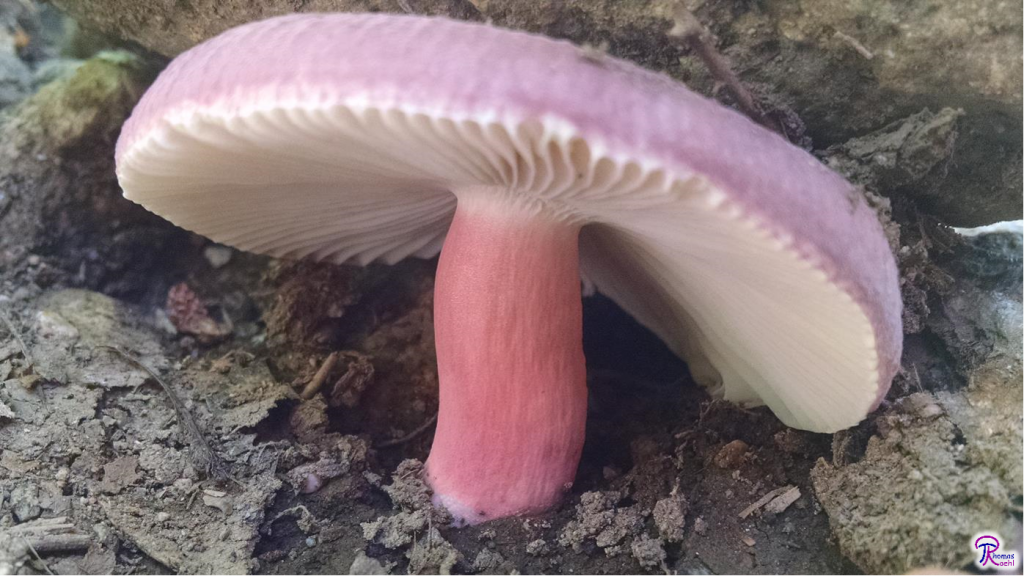
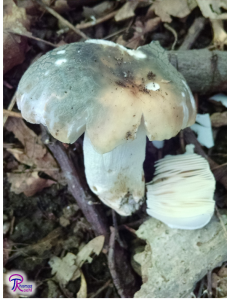
![#049: Coffee Rust [Archived]](https://www.fungusfactfriday.com/wp-content/themes/hueman/assets/front/img/thumb-medium-empty.png)





![#011: Characteristics of Kingdom Fungi [Archived]](https://www.fungusfactfriday.com/wp-content/themes/hueman/assets/front/img/thumb-small-empty.png)

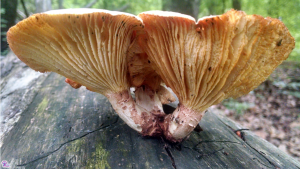
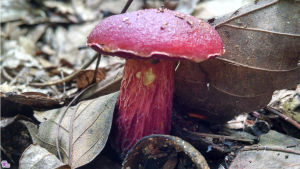
3 Responses
[…] mushrooms release a watery latex when injured. Lactarius mushrooms look a lot like russulas (FFF#175), which are very close […]
[…] Russula11-13 […]
[…] Tail, Stereum ostrea, FFF#144). All these fungi belong to the same order as the genus Russula (see FFF#175), a prolific genus of gilled […]